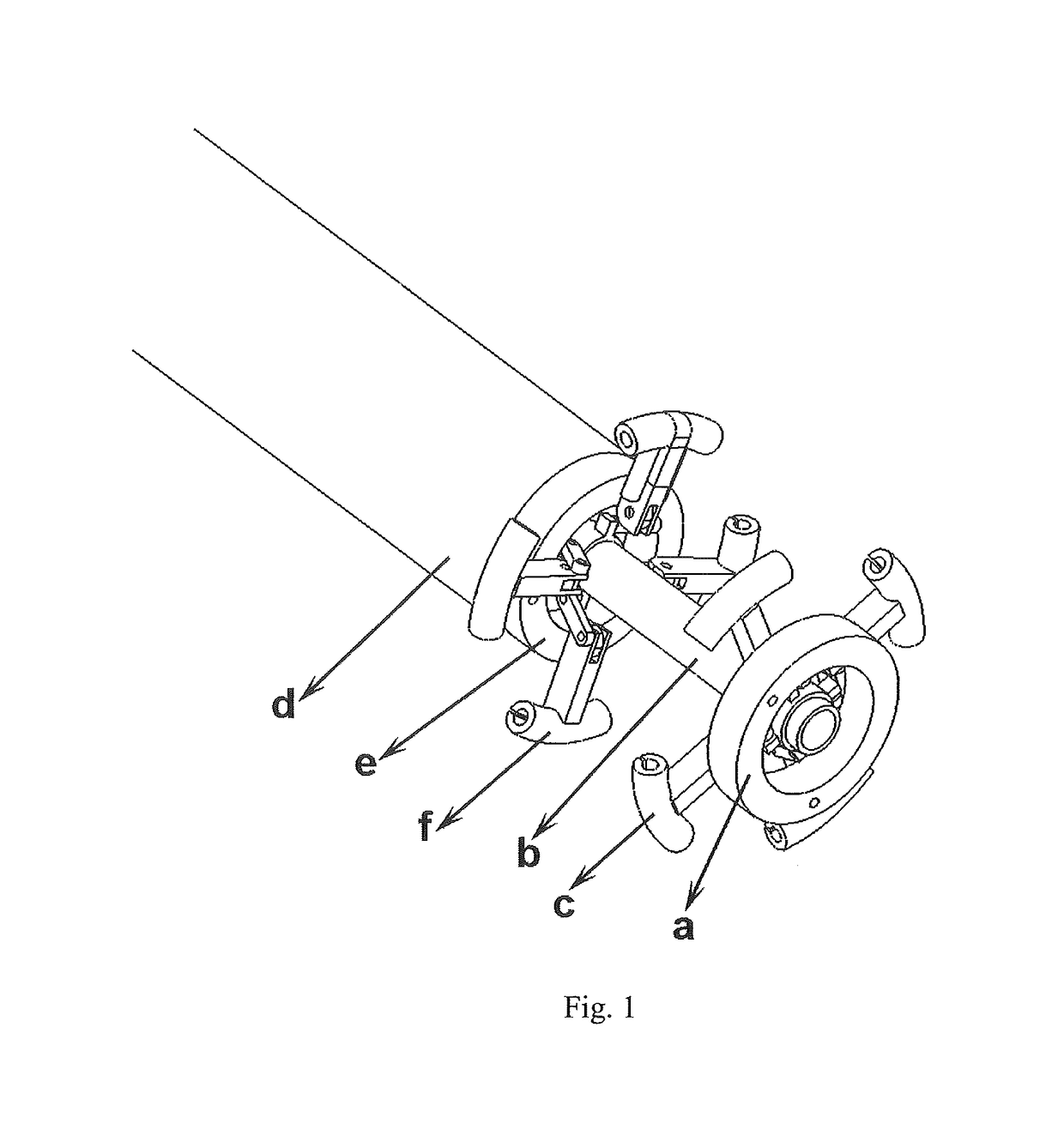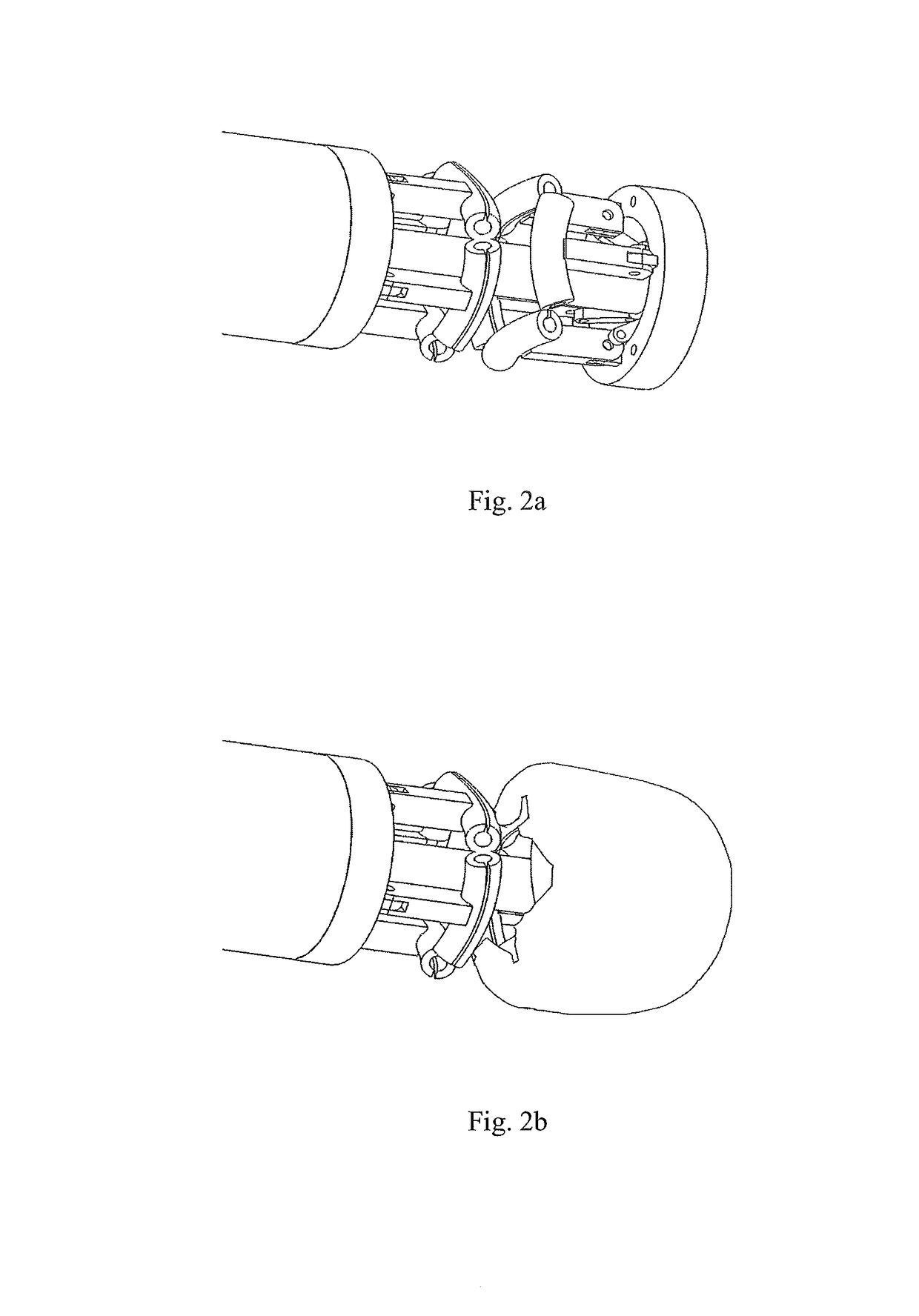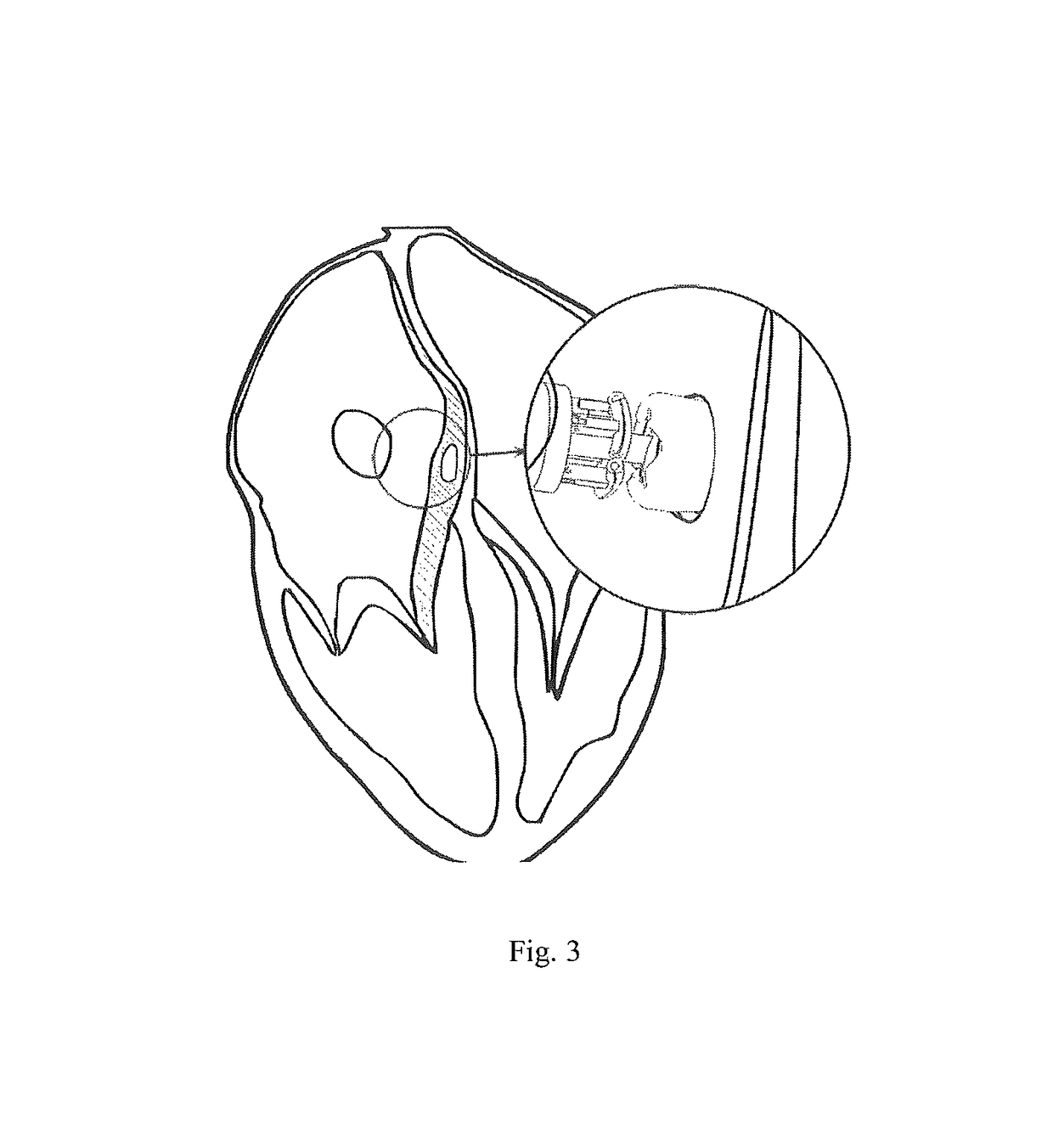Device for percutaneous transcathertral closure of atrial septal defect by deploying pericardial patch
a technology of pericardial patch and atrial septal defect, which is applied in the field of devices for percutaneous transcathertral closure of atrial septal defect by deploying pericardial patch, can solve the problems of affecting the operation of a sizable device in the heart, affecting the effect of atrioventricular valve function, and requiring cpb. , to achieve the effect of reducing the risk of atrioventricular valve distortion, reducing associated pain, and improving the effect of s
- Summary
- Abstract
- Description
- Claims
- Application Information
AI Technical Summary
Benefits of technology
Problems solved by technology
Method used
Image
Examples
Embodiment Construction
[0046]Referring now to the drawings, FIG. 1 illustrates an exemplary aspect of the present invention. Specifically, FIG. 1 illustrates an exemplary device 100 for minimally invasive closure of atrial septal defect without cardiopulmonary bypass, in accordance with an exemplary aspect of the present invention.
[0047]As shown in FIG. 1, the device includes two main parts, a head, which is moveable and includes of a guide rod (b), distal jaw, relative to the person holding the device (a), and 4 suture-guide channels (c), and a body, which is stationary and includes a cylindrical base (d), a proximal jaw (e), relative to the person who holds the device, and 4 suture-guide channels (f). The 8 suture-guide channels (c) and (f), oriented at 90 degrees relative to one another and mounted upon the distal jaw (a) and proximal jaw (e), form a circle, with the channels at the distal jaw (a) being at 0, 90, 180, and 270 degrees and the channels at the proximal jaw (e) being at 45, 135, 225, and 3...
PUM
 Login to View More
Login to View More Abstract
Description
Claims
Application Information
 Login to View More
Login to View More - Generate Ideas
- Intellectual Property
- Life Sciences
- Materials
- Tech Scout
- Unparalleled Data Quality
- Higher Quality Content
- 60% Fewer Hallucinations
Browse by: Latest US Patents, China's latest patents, Technical Efficacy Thesaurus, Application Domain, Technology Topic, Popular Technical Reports.
© 2025 PatSnap. All rights reserved.Legal|Privacy policy|Modern Slavery Act Transparency Statement|Sitemap|About US| Contact US: help@patsnap.com



